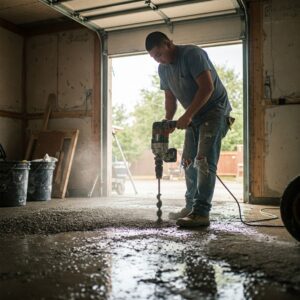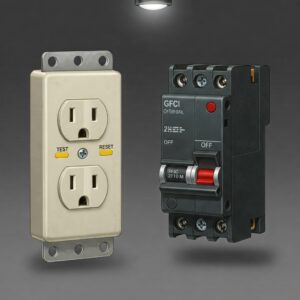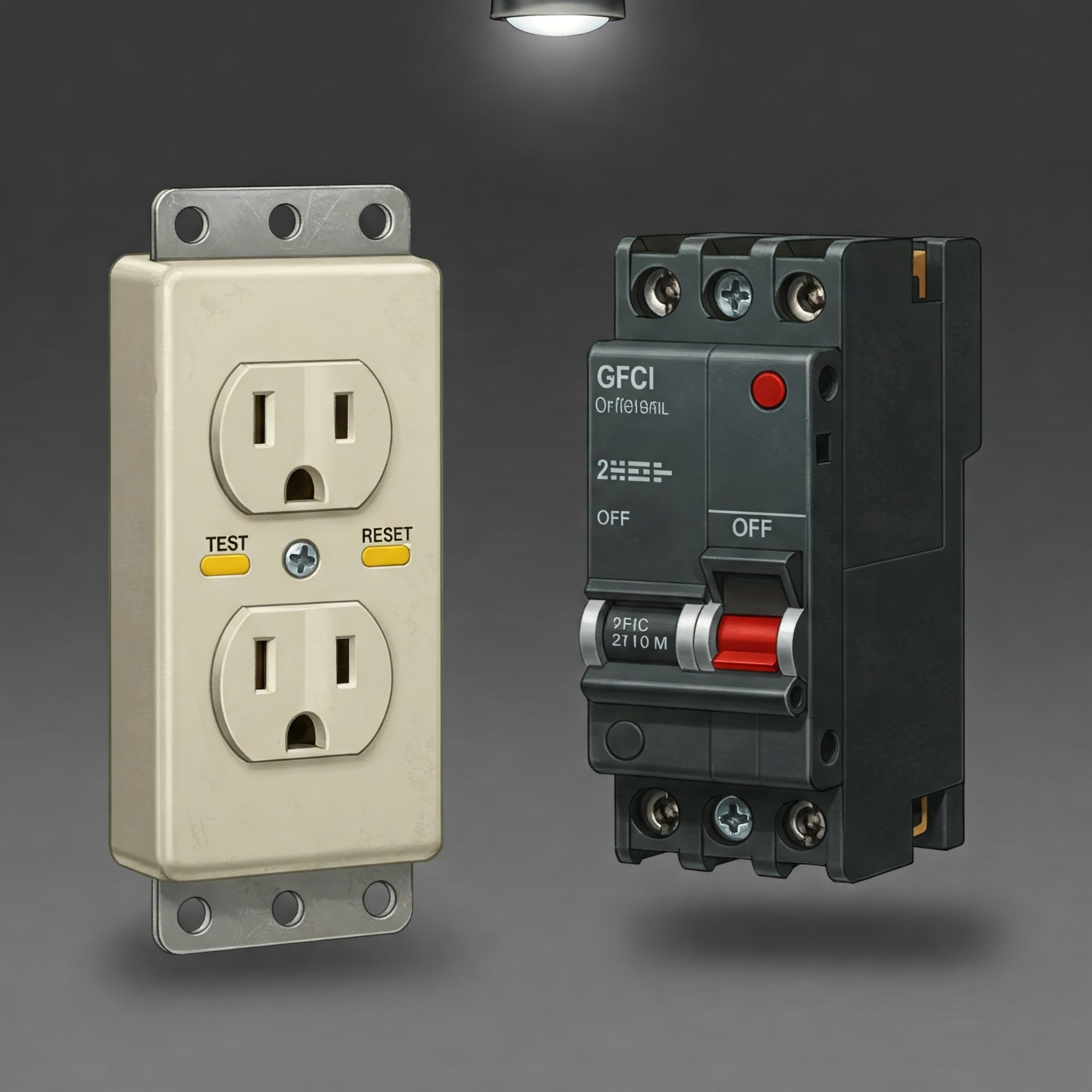As a home inspector, I’ve seen firsthand the critical role Ground Fault Circuit Interrupters (GFCIs) play in keeping families safe. While they might seem like a small detail, these devices are a crucial line of defense against electrical shocks. Let’s delve into the world of GFCIs and why they matter, even in older homes.
What is GFCI Protection?
Simply put, a GFCI monitors the electrical current flowing through a circuit. If it detects a difference between the outgoing and incoming current—even a tiny one—it instantly trips, cutting off power. This difference indicates that electricity is escaping, potentially through a person, preventing a dangerous electrical shock.

A Brief History: How We Got Here
The concept of GFCI protection emerged in the mid-20th century as a response to increasing electrical hazards. Early versions were bulky and expensive, limiting their widespread adoption. However, as technology advanced, GFCIs became smaller, more reliable, and more affordable.
The National Electrical Code (NEC) has gradually expanded GFCI requirements over the years. In the 1970s, the NEC began mandating GFCI protection for outdoor receptacles and bathroom outlets. As awareness of electrical safety grew, the NEC continued to broaden the scope of GFCI requirements, adding kitchens, garages, laundry areas, and other locations where moisture or grounding hazards are present.
Current Standards: Where GFCI Protection is Required
The current NEC mandates GFCI protection for receptacles in:
- Bathrooms: All receptacles serving bathroom countertops.
- Kitchens: All receptacles serving kitchen countertops.
- Garages: All receptacles in garages.
- Outdoor Areas: All readily accessible outdoor receptacles.
- Basements: All unfinished basements.
- Laundry Areas: All receptacles within 6 feet of a sink.
- Crawl Spaces: All receptacles in crawl spaces.
- Wet Bars: All receptacles serving wet bar countertops.
- Sinks: All receptacles within 6 feet of the outside edge of a sink (other than kitchen and bathroom).
It’s important to note that local jurisdictions may have additional requirements, so it’s always best to consult with your local building department. Here is further reading.

Beyond Code: Why Upgrading is Essential, Even in Older Homes
While older homes may have been built to previous code standards, that doesn’t mean they’re as safe as they could be. Here’s why upgrading to current GFCI protection is crucial, and why we recommend them during a home inspection:
- Increased Safety: Older wiring and electrical systems can deteriorate over time, increasing the risk of ground faults. GFCIs provide an extra layer of protection, reducing the likelihood of electrical shocks.
- Modern Appliances: Today’s appliances are more sophisticated and often require more power. Older electrical systems may not be able to handle the load, increasing the risk of electrical hazards. GFCIs help protect against these hazards.
- Peace of Mind: Knowing that your home is equipped with the latest safety features provides invaluable peace of mind, especially for families with young children or elderly members.
- Resale Value: Upgrading to current electrical standards can increase your home’s resale value and make it more attractive to potential buyers.
- Hidden Dangers: Although your home may have passed inspection years ago, hidden dangers can develop. Wires can become brittle, and rodents can chew through insulation. GFCIs will protect you even when you cannot see a problem.
- Arc Faults: While GFCIs protect against ground faults, Arc Fault Circuit Interrupters (AFCIs) protect against arc faults, which are another common cause of electrical fires. Modern codes are also requiring more AFCI protection. I always recommend both GFCI and AFCI protection.
What to Look For:
- Test your GFCI outlets regularly. There is a test and reset button on the outlet.
- When replacing outlets, make sure to replace with GFCI outlets in the required areas.
- When a GFCI trips often, there is a problem. Call a qualified electrician.
As a home inspector, I strongly recommend that all homeowners, regardless of their home’s age, consider upgrading to current GFCI protection. It’s a small investment that can make a big difference in protecting your family from electrical hazards.
Disclaimer: Electrical work should always be performed by a qualified electrician. This blog post is for informational purposes only and should not be considered a substitute for professional advice.
Homer Inspection Services
Performing quality home inspections in PA, Delaware and Maryland.
Book here: www.homerinspect



